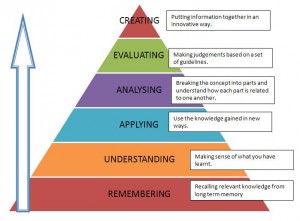
“Scaffold Silhouette” by Chas Pope is licensed under CC BY 2.0
Julie Sievers, Center for Teaching Excellence
Innovation Institute – 24 May 2016
Resources
Framework 1: Bottlenecks in Decoding the Disciplines
- * Middendorf, J. & Pace, D. (2004). Decoding the disciplines: A model for helping students learn disciplinary ways of thinking, Decoding the Disciplines: Helping students learn disciplinary ways of thinking, New Directions in Teaching and Learning 98, 1-12.
- Díaz, A., Middendorf, J., Pace, D., & Shopkow, L. (2008). The history learning project: A department ‘decodes’ its students, The Journal of American History 94(4), 1211-24. [This link will take you into the SEU library databases. If you are off campus, you may need to log in.]
Framework 2: Threshold Concepts
- * Meyer, J. H. F. & Land, R. (2003). Threshold concepts and troublesome knowledge: Linkages to ways of thinking and practising within the disciplines, Improving student learning – Ten years on, OCSLD, Oxford, pp. 412-424.
- Meyer, J. H. F. & Land, R. (2005). Threshold concepts and troublesome knowledge (2): Epistemological considerations and a conceptual framework for teaching and learning. Higher Education, 49(3), April, 373-388. [This link will take you into the SEU library databases. If you are off campus, you may need to log in.]
Framework 3: Taxonomies of Learning

“Bloom’s Taxonomy 1k4snjn” by nist6dh is licensed under CC BY 2.0
- *O’Niell, Geraldine and Feargal Murphy, “Guide to Taxonomies of Learning.” University College Dublin, 2010. Web. 15 May 2015.
- Nilson, Linda. “Outcomes-Centered Course Design.” In Teaching At Its Best: A Research-Based Resource for College Instructors. 3rd ed. Hoboken: Wiley.
Framework 4: Learning Cycles
- * Kolb’s experiential learning cycle – “Experiential Learning Defined.” University of Texas at Austin Center for Teaching and Learning, 2014. Web. 15 May 2015.
- Exploration –> Concept Invention –> Application: the POGIL learning cycle. Learn more about Process-Oriented, Guided-Inquiry Learning (POGIL)
- Lee, V. S. (Ed.) (2012). Inquiry-guided learning. New Directions in Teaching and Learning 129. San Francisco: Jossey-Bass.
Framework 5: Questioning Sequences
- Nilson, L. (2010). Ch. 14: Questioning techniques for discussion and assessment. Teaching at its best: A research-based resource for college instructors. 3rd ed. Hoboken: Wiley, 137-144.
Additional Factors to Consider
- scaffolding the progression of private work to increasingly public work
- scaffolding the progression of low-stakes to high-stakes work
- scaffolding practice and feedback before performance
- scaffolding work on both process and product
- scaffolding the progression from teacher-dependent work to increasingly independent work
- sequences / progressions may or may not be linear
- cycles may look less like circles, more like spirals or helices
